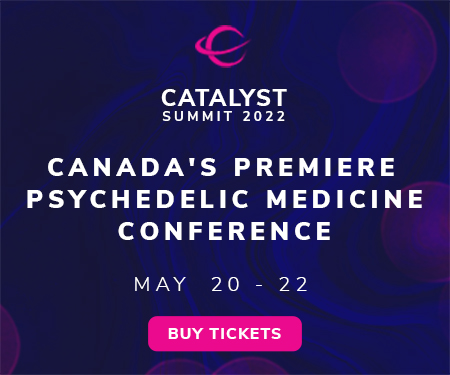Truffle Report Attends an Expert Psychedelic Therapy Panel at Street Drugs Discussions
Panellists at the Street Drugs Discussions Series highlighted and compared how psychedelic-assisted therapy practices differ in clinical and retreat settings.
The panel was hosted virtually on January 8 and moderated by Jo Neill, professor of psychopharmacology at the University of Manchester and chair of the Drug Science Medical Psychedelics working group at b-neuro.
Panellists included Rosalind Watts, formerly a clinical lead psychologist at the Psychedelic Research Group at Imperial College London and now a clinical director at Synthesis Institute, and Simon Ruffell, senior research associate psychiatrist at King’s College London looking at the use of psilocybin for depression.
Ayahuasca Retreat Setting
Neill kicked off the panel by asking participants for their thoughts on set, setting, location, therapy, and integration in psychedelic-assisted sessions, with a focus on plant medicines, such as ayahuasca and psilocybin.
Ruffell’s main interest is using ayahuasca in an adapted traditional setting in the Peruvian Amazon. Currently, Ruffell is conducting a study on the effects of ayahuasca on childhood trauma and associated mental health outcomes. He stressed out that the research team is “very much learning” and the “real experts” in this psychedelic area are the indigenous peoples of the Peruvian Amazon.
“I don’t think it’s right to talk about the research that we do without shining a light on ayahuasca tourism. It’s not without its issues,” Ruffell started. “Some people believe this might be diluting the indigenous traditions. Because Westerners have an idea of what they want out of a retreat, therefore, some of the traditions have been tailored towards that. There are also environmental concerns, not just about people flying to the Amazon and the harvesting of ayahuasca, whether or not that’s being done in a sustainable way. And there are some safety concerns as well. In South America, ayahuasca, especially in Peru, is largely unregulated. And this has led to some charlatans trying to run retreats. Unfortunately, as well as psychological and physical problems, there’s been an increase in sexual abuse.”
“Some people believe that this might be a new way of neocolonialism because there’s a market largely controlled by non-locals. That being said, ayahuasca tourism does lead to lots of healing, meaning, and a global community as well,” he continued.
Ruffell’s research is based on the Shipibo framework adapted for Western ayahuasca tourists and is located in the RIOSBO, a MAPS affiliated research center.
“We work with experienced practitioners such as don Ronor, the curandero, and our research center is based in the Mishana National Reserve in the Peruvian Amazon. This is a community of 80 indigenous people. There’s no electricity, phone signal, or internet, and it’s two to three hours away from the nearest town which is a key to us,” Ruffell explained.
The first study dealt with the effects of ayahuasca on personality, and was conducted as an observational repeated measures study. Participants were tested immediately before and after their retreat. Then six months later, to look for long-term changes. The retreats lasted for 12 days with six ayahuasca ceremonies, one every other day. Researchers also conducted semi-structured interviews during the retreats. There was a sample group of 24 people, nine of whom were female, primarily from a Western background.
“We found that there was a significant decrease in how neurotic participants were. And this was when we compared it to our comparison group, which was individuals that were travelling around South America, not drinking ayahuasca. What’s more, these decreases in neuroticism weren’t only in the short term, so immediately after the two-week retreats, but they were maintained six months later, we found that particularly exciting. We also found there were significant increases in how agreeable participants were, in comparison, to the control group. This was both in the short term and the long term as well. We also found that the greater the degree of reduction in neuroticism, the greater the perceived and mystical experience of the participants,” Ruffell said.
The second study looked at ayahuasca’s effects on childhood trauma and its use in an adapted traditional framework. Researchers were looking at the short and long-term impact of ayahuasca on mental health and well-being for those who have experienced varying degrees of childhood trauma. Also, the changes in mental health and how mental health outcomes were related to overgeneralized autobiographical memories. This iteration had 65 participants.
“We found some significant decreases in depression, both in the short term so immediately after the retreats and six months later in the long term. And again, we found significant decreases in short and long-term anxiety. We found that participants’ self-compassion increased. They became less distressed. We also found that participants had less overgeneralized negative autobiographical memory recall,” Ruffell explained.
Clinical Psilocybin Setting
Watts’s main focus is the psychological mechanisms of psilocybin treatment. Her module of psychedelic therapy is to accept, connect, and embody, or ACE for short. She’s expanding the ACE model by supplementing psychedelic therapy with a yearlong therapy program called accept, connect, embody and restore, or the ACER model. This program is designed to support ongoing connectedness to self, to others, and the natural world.
“With psilocybin for people with depression, it allows people to go to deeper layers. It allows people to go beyond their story that they’ve been telling many therapists and telling many times. It allows them to go to a deeper layer of themselves,” Watts said. “The mechanisms that I’ve been looking into is all about connectedness. Depression is a state of profound disconnection from the self, from other people, from the wider world, from the beyond as well. People feel very trapped, they feel like they’re living in their mind and they’re living in a kind of prison. It’s very hard to break out of that.”
“People with depression would come into the clinic at Imperial, and they would sit with us all day listening to a playlist, a very important part of it, the music is the kind of the third therapist in the room. Psilocybin allows people to open up and access all these different parts of themselves and have these journeys of exploration. Those journeys are shaped by music. Music takes people in particular directions. But the content of those journeys is very much given that life is given colour by people’s unconscious mind, what they’ve stored, childhood memories and beyond,” she explained.
For patients who have never tried psilocybin, Watts likens the process to a deep-sea dive.
“Imagine you’re swimming along the surface of the sea, and your normal thoughts are hitting you like persistent waves. You’re trapped in that, just struggling to stay afloat and to tread water, and that’s depression. Then you’re choosing to take these capsules of synthetic psilocybin, and you’re gonna dive down beneath the surface of that kind of normal thinking, which is kind of like the ego-mind or like day-to-day consciousness. You’re going to dive down into your body, and when you get down to those layers, there are lots of murky waters, there are lots of dark places because that’s why you’re here. When you dive down to those layers of the sea, don’t swim away from them and look for the pretty fish and the bright lights, go down and down into the darkest places that you can because that’s where you’ll learn,” she explained.
“We use the analogy of like a spiky oyster shell. Right to the bottom of the sea where it’s dark and muddy, you see these spiky looking oyster shells, and then you don’t want to go near them because they’re ugly, and spiky, and dark. When you open them up, they’ve got all these layers of slime. That’s kind of like the shame and that inner vulnerability that can happen when you do go towards your deepest pains and the things that you’ve been trying to hide from yourself for a long time because they’re just so threatening. You open up that spiky shell, go through those layers of slime shame, and then you get to the pearl. The pearl in the oyster is the learning that comes when we go in that ugly place, is when we go towards it rather than away. Psilocybin seems to help people go to that place with their guides, maybe us holding their hand, and the music helping them open up to those feelings, they would often have these big moments of breakthroughs of understanding why that pain was there understanding, what that pain was trying to teach them,” she continued.
At Synthesis, Watts is administering group psilocybin-assisted therapies to grow even more connectedness for patients. For group therapies, Watts uses a forest analogy, as the trees connect in the group.
Preparation Stage for Psychedelic Therapy
Watts stressed that it is important to let patients know that they “might feel like they’re dying or they’re exploding.”
“We would have the psychiatrist and the guides in the room for the screening interview. And in that interview there was a sense of, ‘We are the guides that are going to be in this session, do we feel that we can comfortably fit with this particular person.’ Different therapists will fit easily with different participants because they have all sorts of different factors that we’re not even consciously aware of. Some people, we might just tell it ‘yeah I can work with this person I feel solid with this person,’ some people we might think something in these being slightly triggered here doesn’t feel so comfortable. It’s the same for the participant they get a sense of whether they trust this guide,” Watts explained.
At Synthesis, the preparation for a clinical psychedelic program takes four to five months.
The One-on-One or Group Healing
Answering the question of whether psychedelic-assisted therapy is better for individuals or groups, Watts emphasized that “the healing part of the group is huge.” Watts began an online integration group due to Covid-19 restrictions for patients to meet and share their experiences.
“Meeting each other, knowing that they’d all been through the same experience, the bonds that they develop, the strength that came from that, is probably almost as strong as the psilocybin experience itself. Honestly, people were crying out for that kind of community. And it’s a community of people that are already committed to doing the same thing. It’s not just some friends chatting. It’s people saying, ‘We have all suffered for decades. We’re committed to finding a new way through this, and we’re going to help each other’. It’s a very moving powerful connection,” Watts said.
Adding to Watts’s comment Ruffell said that “having someone to talk to and someone who gets the experience” is different, but vital support through the retreat therapy as well.
Street Drugs Discussions will be hosting another deep dive discussion, this time on cannabis policy, on Friday January 22, 2021.

















